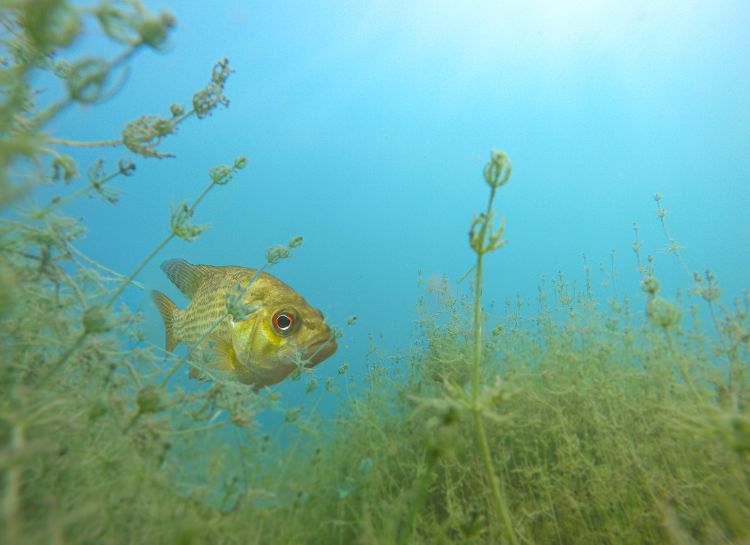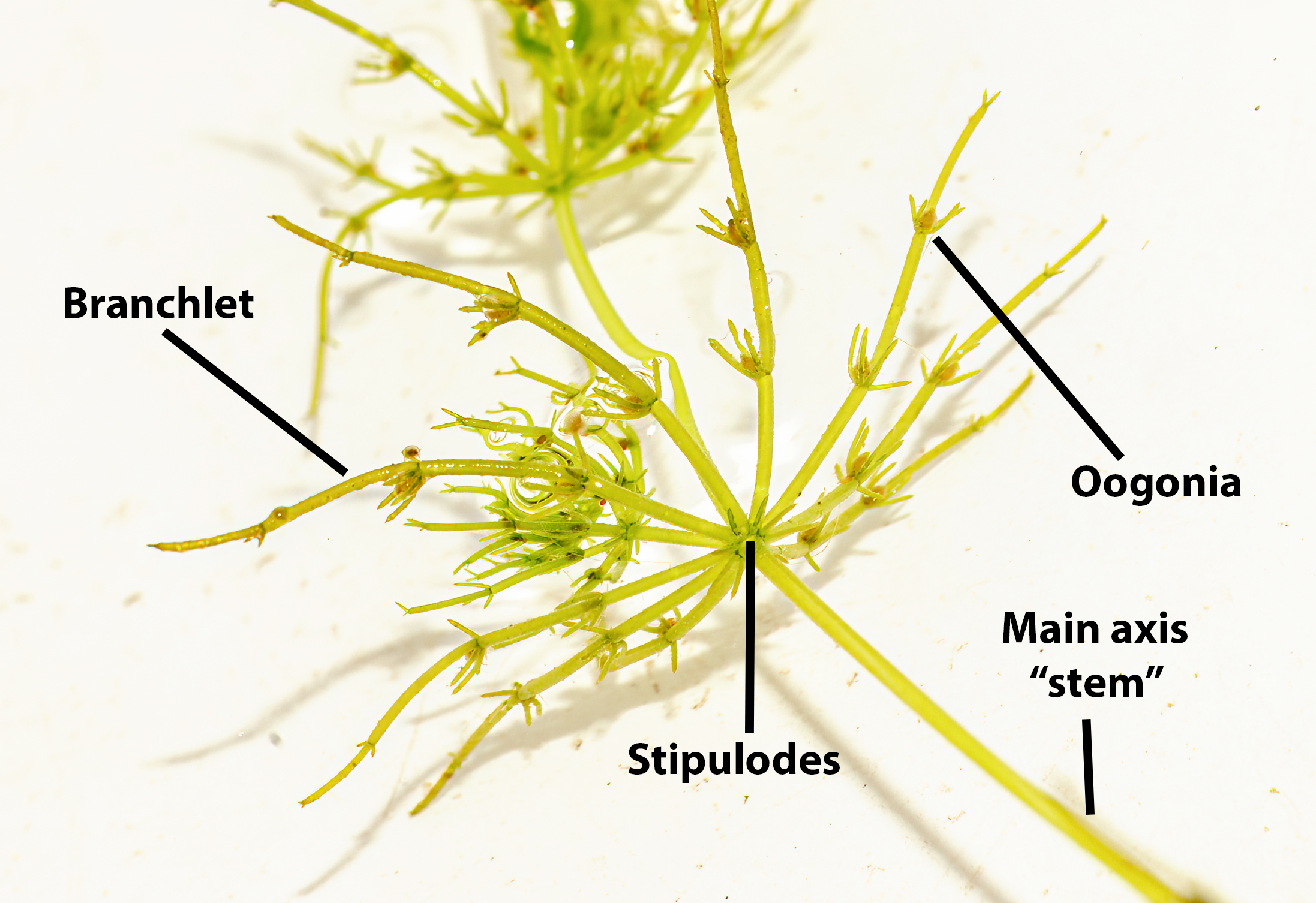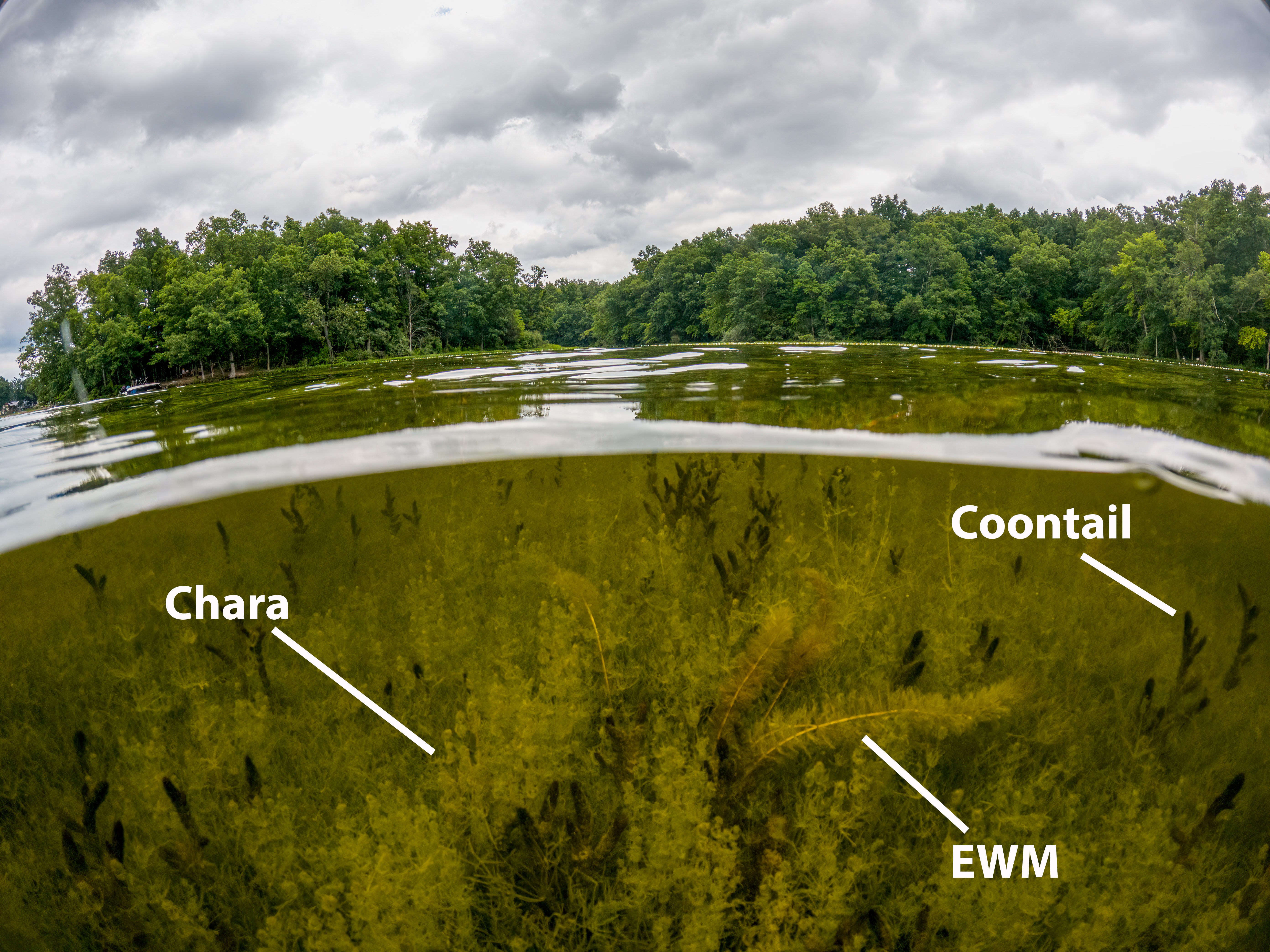Why do we care about Chara?
Learn more about the importance of Michigan’s underwater understory.

Peering under the waves reveals an enchanting world where fish, invertebrates, amphibians, and reptiles are busily living out their lives surrounded by the backdrop of towering pondweeds, spires of northern watermilfoil, and meandering coontails that float gracefully in the water column above. Below the awning of these lofty species, our underwater forest unfolds into a tapestry of small purple bladderwort, pipewort, creeping spearwort, and the ubiquitous and charismatic Chara.
Belonging to an ancient family of plants, Chara is not a higher flowering plant, but a macroalga. With around 10 native species currently known in Michigan, these aquatic architects not only provide sanctuary for a myriad of organisms but also play a vital role in maintaining the clarity of the water itself.
Identification
Commonly referred to as muskgrass or stoneworts, Chara is difficult to identify by species, but as a group, can be easily discerned from other aquatic plants. Chara grows fully submerged and is often found forming extensive meadows in water as shallow as a few inches or as deep as 30 feet.

Depending on the species, Chara can be a couple of inches tall to a few feet high. The leaflike branchlets are needle-like and whorled around the stem (Figure 2). Their reproductive parts are minute, but the often orange-tinted male structures can be quite conspicuous.
Translucent rootlike structures called rhizoids are also helpful for identification as they look like fishing line coming out of the bottom of the plant. Some species also smell like skunk, which gives Chara its common name of muskgrass.
Ecosystem services: Trapping sediments, using nutrients, and improving water clarity
Chara is one of the most abundant aquatic plants in freshwater lakes due to its meadow forming abilities (Figure 3). As such, Chara plays a significant role in lake ecosystems, specifically when it comes to promoting water clarity.

In shallow lakes, or deep lakes with extensive littoral zones, one of the largest contributors to low water clarity can be sediments resuspended from the lakebed by wind or boat driven waves. When extensive meadows of Chara are present, wave energy reaching the lakebed is slowed by Chara’s dense and tangled stems.
As a result, the water is clearer because fewer lake sediments like clay and organic particles, called detritus, are resuspended into the water column. Also, over large Chara meadows, the water may slow enough for particles already suspended in the lake water to drop out, creating zones of clear water.
Chara’s dense and far-reaching meadows also have a pronounced impact on phytoplankton, or free-floating microscopic algae. Chara primarily uptakes nutrients like phosphorus and nitrogen from the water column and can cause substantial reduction in water column nutrients. This in turn reduces how many nutrients are available to phytoplankton and, therefore, helps promote clear water conditions.
Multiple Chara species also remain green all winter and serve as long-term nutrient storage through the seasons. This is in comparison to many other species of aquatic plants that die back each winter, which can result in the release of nutrients back into the water column.
In our hard water marl lakes, Chara also contributes to a chemical process where during photosynthesis, calcium carbonate comes out of solution and precipitates onto the surface of the Chara. This is what gives Chara its gritty feel and its other nickname, “stonewort.” During this process, phosphorus in the water column can get bound up in the calcium carbonate, essentially locking the phosphorus up even when oxygen is not present. This process is important, as a single pound of available phosphorus can stimulate the growth of up to 500 pounds of algae.
Beneficial habitat
Aquatic plants are important habitat for an incredible diversity of aquatic organisms like fish and macroinvertebrates (Figure 1). First, plants offer scaffolding for organisms to colonize and call home. Second, aquatic plants are a great food source and also provide a surface for periphyton (i.e., attached algae matrix), which is readily consumed by macroinvertebrates like snails. Third, aquatic plants provide protection from stalking predators, and fourth, some fish utilize aquatic plants as spawning substrate. By providing each of these elements in abundance, Chara provides key habitat for many species.
Waterfowl also depend on Chara for sustenance during nesting and migratory periods. Species like ring-necked ducks and Greater Scaup feed on the energy rich oogonia, the female reproductive structures of Chara. Up to 300,000 oogonia have been found in a single duck!
Research also suggests that duck guts may play a role in the transport and dispersal of Chara propagules. Therefore, ducks and Chara are intimately connected through their roles in the aquatic food web, and the potential duck-mediated dispersal of Chara propagules.
Protection and restoration
Like many aquatic plants, Chara is often dismissed as a weed—a nuisance to be cleared away. Its sprawling underwater meadows, though sometimes seen as obtrusive, are in fact vital sanctuaries teeming with life.
Ultimately, Chara is more than just a seaweed: it is a keystone of lake ecosystems that sustains water clarity by stabilizing sediments and cycling nutrients. Removal should be approached with care and if control is undertaken, balancing our desires with the needs of the lake should be the greatest consideration. We sincerely hope that a better understanding of the many services provided by Chara will foster a greater appreciation for these ancient underwater sentinel species.
This article was originally published in the Fall 2025 issue of the Michigan Riparian magazine, a publication produced by the Michigan Lakes and Streams Association.



 Print
Print Email
Email




